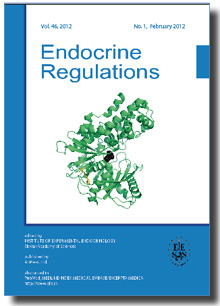Journal info
|
||
Select Journal
Journals
Bratislava Medical Journal Ekologia - Ecology Endocrine Regulations 2015 2014 2013 2012 2011 2010 2009 2008 2007 2006 2005 2004 2003 General Physiology and Biophysics Neoplasma Acta Virologica Studia Psychologica Cardiology Letters Psychológia a patopsych. dieťaťa Kovove Materialy-Metallic Materials Slovenská hudba 2025Webshop Cart
Endocrine Regulations Vol.43, No.2, p.59-64, 2009 |
||
| Title: ANIMAL MODEL OF METASTATIC PHEOCHROMOCYTOMA: EVALUATION BY MRI AND PET | ||
| Author: L. Martiniova, E. W. Lai, D. Thomasson, D.O. Kiesewetter, J. Seidel, M. J. Merino, R. Kvetnansky, K. Pacak | ||
| Abstract: Objective. The development of metastatic pheochromocytoma animal model provides a unique opportunity to study the physiology of these rare tumors and to evaluate experimental treatments. Here, we describe the use of small animal imaging techniques to detect, localize and characterize metastatic lesions in nude mice. Methods. Small animal positron emission tomography (PET) imaging and magnetic resonance imaging (MRI) were used to detect metastatic lesions in nude mice following intravenous injection of mouse pheochromocytoma cells. [18F]-6-fluoro-dopamine ([18F]-DA) and [18F]-L-6-fluoro-3,4-dihydroxyphenylalanine, which are commonly used for localization of pheochromocytoma lesions in clinical practice, were selected as radiotracers to monitor metastatic lesions by PET. Results. MRI was able to detect liver lesions as small as 0.5mm in diameter. Small animal PET imaging using [18F]-DA and [18F]-DOPA detected liver, adrenal gland, and ovarian lesions. Conclusion. We conclude that MRI is a valuable technique for tumor growth monitoring from very early to late stages of tumor progression and that animal PET confirmed localization of metastatic pheochromocytoma in liver with both radiotracers. |
||
| Keywords: Anatomical imaging – Functional imaging – MRI, small animal PET – Animal model | ||
| Year: 2009, Volume: 43, Issue: 2 | Page From: 59, Page To: 64 | |
| doi:10.4149/endo_2009_02_59 |
||
|
|
 download file download file |
|

